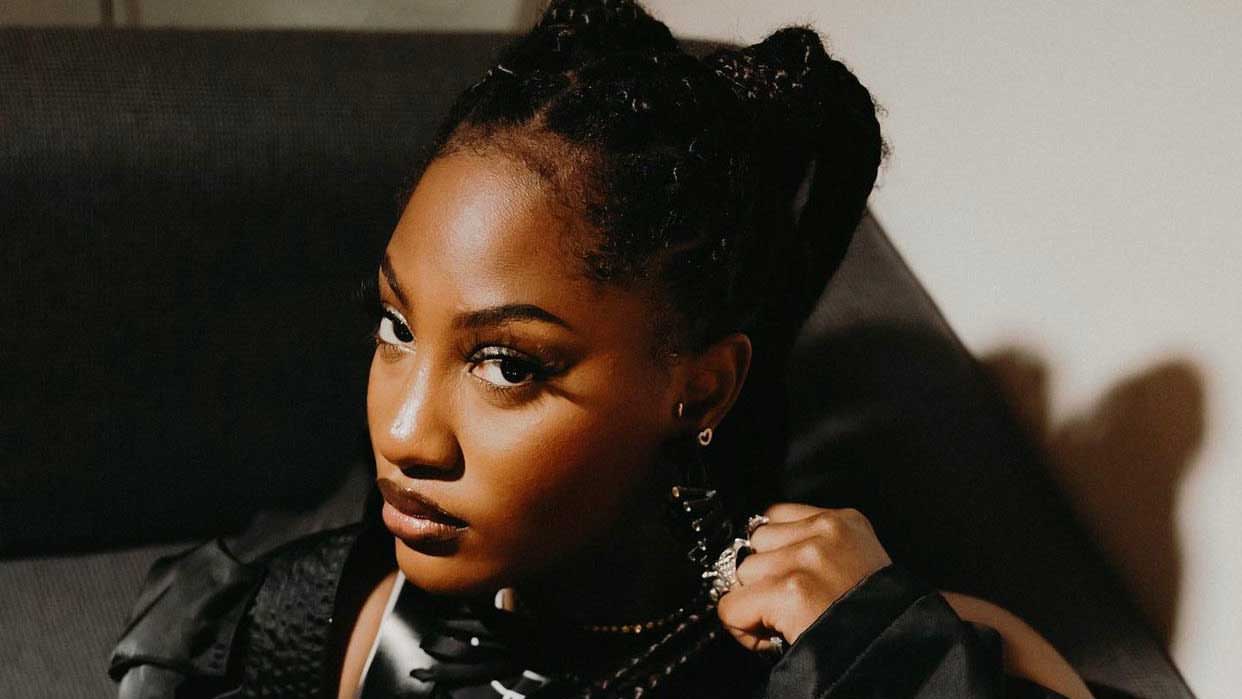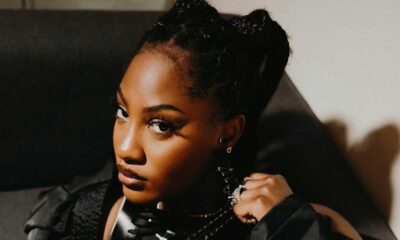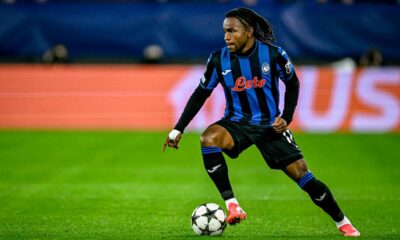News of Cuban revolutionary leaders death has since made the rounds today and met with mixed reactions the world over. However, a good number of people the world over are wondering about his popularity. Who really was Raul Castro? We turn to Wikipedia to help us break down this man who believed in his unique perspective and stood for it even when the world stood against him. See below:

Cuban leader Fidel Castro, left, shares a laugh with South Africa President Nelson Mandela at the World Trade Organization held in Geneva Tuesday, May 19, 1998. Mandela and Castro said in separate speeches that the global trading system had failed to achieve its goals of bringing a higher standard of living to many developing countries. (AP Photo/PATRICK AVIOLAT)
Raúl Castro, in full Raúl Modesto Castro Ruz born 3 June 1931), is a Cuban politician and a revolutionary, who has been President of the Council of State of Cuba and the President of the Council of Ministers of Cuba since 2008. Castro previously exercised presidential powers in an acting capacity from 2006 to 2008. Castro is Commander in Chief of the Armed Forces (Army, Navy, and Air Force), and has also been First Secretary of the Central Committee of the Communist Party of Cuba (PCC) since 2011. Castro is the nation’s highest ranking general.
Raúl Castro was a rebel commander during the 1950s. After his brother Fidel Castro took power, Raúl Castro was one of the most important figures in the party, serving as Minister of the Armed Forces for 49 years, from 1959 to 2008.
On 31 July 2006, Raúl Castro was designated as the President of the Council of State in a temporary transfer of power, due to Fidel Castro’s illness. According to the Cuban Constitution of 1976, Article 94, the Vice President of the Council of State assumes presidential duties upon the illness or death of the President.
Raúl Castro was officially made President by the National Assembly on 24 February 2008, after Fidel Castro, who was still ailing, announced his intention not to stand for President again on 19 February 2008.[7]
Raúl Castro became First Secretary of the Communist Party at its Sixth Congress on 19 April 2011, having previously served as Second Secretary under his brother for 46 years.
Castro was re-elected President on 24 February 2013. Shortly thereafter, Castro announced that his second term would be his final term, and that he would not seek re-election in 2018.
Early life
Born in Birán, Cuba, the son of a Galician immigrant father, Ángel Castro, and a Cuban-born mother of Canarian parentage, Lina Ruz. They illegitimately gave birth to him while Angel was married to another woman. Raúl is the youngest of the three Castro brothers parented illegitimately in this way: Ramón, Fidel, and himself. He also has four sisters, Angela, Juanita, Emma, and Agustina. Ángel Castro’s first wife, Maria Argota, also raised five half siblings of Raúl: Pedro Emilio, Maria Lidia, Manuel, Antonia and Georgina.
As children, the Castro brothers were expelled from the first school they attended. Like Fidel, Raúl later attended the Jesuit School of Colegio Dolores in Santiago and Belen Jesuit Preparatory School (Spanish: Colegio Belén) in Havana. Raúl, as an undergraduate, studied social sciences. Whereas Fidel excelled as a student, Raúl turned in mostly mediocre performances. Raúl became a committed socialist and joined the Socialist Youth, an affiliate of the Soviet-oriented Cuban Communist Party, Partido Socialista Popular (PSP). The brothers participated actively in sometimes violent student actions.
Raúl Castro’s travels and contact with Soviet KGB agent Nikolai Leonov—whom he met in 1953 during a trip to the Soviet-bloc nations and again in 1955 during his exile in Mexico City—facilitated Cuba’s close ties with the Soviets after the triumph of the Cuban Revolution. Leonov would later become the USSR’s KGB man in Havana.
In 1953, Raúl served as a member of the 26th of July Movement group that attacked the Moncada Barracks; he spent 22 months in prison as a result of this action. During his exile in Mexico, he participated in the preparations for the expedition of the boat Granma to Cuba.
Commander in the Cuban Revolution
Raúl Castro (left), with his arm around second-in-command, Ernesto “Che” Guevara, in their Sierra de Cristal mountain stronghold in Oriente Province, Cuba, 1958
Raul Castro (second from left) is shown blindfolding a man to be shot by firing squad. Oriente Province, Cuba, circa 1958
Raul Castro with Salvador Allende, 1959
When the Granma landing failed and the 82 expeditionaries were detected by government troops soon after, Raúl was one of only 21 fighters who managed to reach a safe haven in the Sierra Maestra mountains, forming the core of the nascent rebel army (see the Cuban Revolution). As Fidel’s brother and trusted right-hand man, and given his proven leadership abilities during and after the Moncada attack, he was given progressively bigger commands. On 27 February 1958, Raúl was made comandante and assigned the mission to cross the old province of Oriente leading a column of guerrillas to open, to the northeast of that territory, the “Frank País Eastern Front.”
As a result of Raúl’s “Eastern Front” operations, he was not involved in the pivotal Operation Verano (which came close to destroying the main body of fighters but ended up a spectacular victory for Fidel). However, Raúl’s forces remained active and grew over time.
On 26 June 1958, Raúl Castro’s rebels kidnapped ten Americans and two Canadians from the property of Moa Bay Mining Company (an American company) on the north coast of Oriente Province. The next day rebels took hostage 24 US servicemen on leave from the United States naval base at Guantanamo Bay. This incident brought total kidnapped hostages to 36 (34 US and 2 Canadian citizens).
US Ambassador Smith and his staff determined the kidnappings had the following objectives: Obtain worldwide publicity, regain M-26-7 prestige lost by general strike call failure, force Batista’s Air Force to stop bombing rebel holds, and gain public recognition from the US.
Two tactical objectives the kidnapping achieved for Castro forces can be discerned from contemporaneous reporting in Time: Batista declaring a ceasefire for negotiations, forcing a reduction in Operation Verano air raids; the rebels used the lulls to regroup and fly in arms.
The hostage-taking caused significant US backlash, including unfavorable public reaction, and US consideration to re-establishing military support to Batista and deploying US forces to free the hostages. Ultimately, the hostages were released in very small groups, extracting the maximum press attention.
By October 1958, after being reinforced by Fidel, the two brothers had about 2,000 fighters and they were operating freely throughout Oriente province. In December, while Che Guevara and Camilo Cienfuegos were operating around Santa Clara, Fidel and Raúl’s army laid siege to Maffo (capturing it on 30 December). Their victorious army then headed to Santiago de Cuba, the capital of Oriente province.
In response to the victory by Che Guevara at the Battle of Santa Clara, the U.S.-backed President Fulgencio Batista fled Cuba in the early morning of 1 January 1959.The two Castro brothers with their army arrived on the outskirts of Santiago de Cuba and said their forces would storm the city at 6 PM 1 January if it did not first surrender. The commander (Colonel Rego Rubido) surrendered Santiago de Cuba without a fight. The war was over and Fidel was able to take power in Havana when he arrived on 8 January 1959.
Raúl’s abilities as a military leader during the revolution are hard to see clearly. Unlike Che Guevara or Cienfuegos, Raúl had no significant victories he could claim credit for on his own. The last operations (which were clearly successful) were conducted with his older brother Fidel present (and in command).
After Batista’s fall, Raúl had the task of overseeing the summary execution of scores of soldiers loyal to deposed president Batista.
Early political career
Raúl Castro Ruz was a member of the national leadership of the Integrated Revolutionary PO Organizations (established July 1961; dissolved March 1962) and of the United Party of the Socialist Revolution of Cuba (established March 1962; dissolved October 1965). He is also credited with helping shoot down a Lockheed U2 and killing Major Rudolf Anderson. He served as a member of the Central Committee of the Communist Party of Cuba and as the Second Secretary of its Politburo from the Party’s formation in October 1965; also as the First Vice President of the Cuban Council of State, of the National Assembly of People’s Power, and of the Council of Ministers from when these were established in 1976. He was appointed Minister of the Revolutionary Armed Forces when the Ministry was founded in October 1959 and served in that capacity until February 2008.
Assumption of Presidential Duties
See also: 2006–2008 Cuban transfer of presidential duties
On 31 July 2006, Fidel Castro’s personal secretary Carlos Valenciaga announced on state-run television that Fidel Castro would provisionally hand over the duties of First Secretary of the Communist Party of Cuba (party chief), President of the Council of State of Cuba (head of state), President of the Council of Ministers of Cuba (prime minister), and Commander-in-Chief of the Armed Forces to Raúl Castro while Fidel underwent and recovered from intestinal surgery to repair gastrointestinal bleeding.
Many commentators consider Raúl Castro to be a political hardliner who will maintain the Communist Party of Cuba’s influence in the country. However, there are others who believe that he is more pragmatic than his older brother and willing to institute some market-oriented economic policies. It is speculated that he favours a variant of the current Chinese political and economic model for Cuba in the hopes of preserving some elements of the socialist system.However, none of these speculations has ever been confirmed by Raúl himself.
Raúl is considered by some to be less charismatic than his brother Fidel Castro, who remained largely out of public view during the transfer of duty period. His few public appearances included hosting a gathering of leaders of the Non-Aligned nations in September 2006, and leading the national commemoration of the 50th anniversary of the Granma boat landing, which also became Fidel’s belated 80th birthday celebrations.
In a speech to university students, Raúl stated that a communist system in Cuba would remain, and that “Fidel is irreplaceable, unless we all replace him together.”
On 1 May 2007, Raúl presided over the May Day celebrations in Havana. According to Granma the crowd reached over one million participants, with delegations from over 225 organizations and 52 countries.
Raúl is known for his businesslike, unanimated delivery of speeches. May his soul rest in peace.
See more on Fidel Castro at wikipedia.com.

 MUSIC5 days ago
MUSIC5 days ago
 NEWS5 days ago
NEWS5 days ago
 FAB FRESH4 days ago
FAB FRESH4 days ago
 ENTERTAINMENT5 days ago
ENTERTAINMENT5 days ago
 BEAUTY5 days ago
BEAUTY5 days ago
 LIFESTYLE5 days ago
LIFESTYLE5 days ago
 ENTERTAINMENT5 days ago
ENTERTAINMENT5 days ago
 FAB FRESH5 days ago
FAB FRESH5 days ago









































